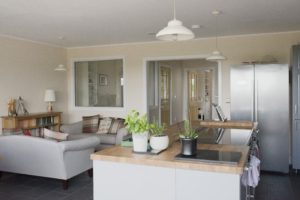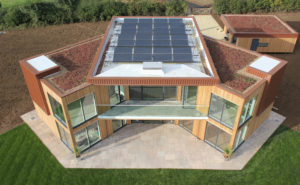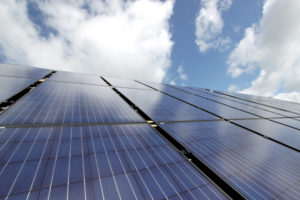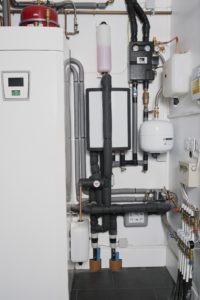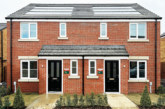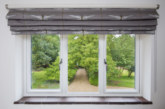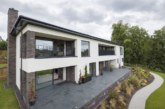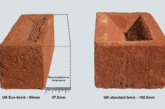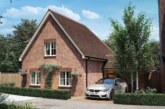
PHPD spoke with Caplin Homes about the Earth Energy Bank solution pioneered by the company, which could be a new model for zero carbon homes.
Building new homes that have long-term low energy needs in a cost effective manner is something many in the new build sector are seeking to achieve.
Since its establishment in the 1970s housebuilder Caplin Homes has been passionate about just that, and has been building energy efficient homes using timber frame for over 30 years. More recently it has been developing a solution which integrates existing renewable technologies with its own concept, the Earth Energy Bank. The goal is to create a zero carbon house that is affordable to build, run and maintain.
Zero carbon solution
The company describes the Earth Energy Bank (EEB) as a, “practical and low cost form of inter-seasonal heat storage.” A cost-effective alternative to traditional ground-loop or deep bore systems the EEB features a series of shallow bores situated underneath the house. Fluid pumped from a series of PV-T panels on the roof runs through these bores to heat the ground under the house during warm periods. This heat can then be drawn upon as required via a heat pump during the coldest weeks of the year.
The hybrid Photovoltaic Thermal (PV-T) panels on the roof collect both electrical and thermal energy. These are used to generate heat to warm the house and its hot water system, as well as heat the EEB. The process also provides electricity to run the system and for lighting.
The brains of the system is a sophisticated controller which manages the flow of energy taking into account the outside and inside temperatures, the occupants’ desired temperature, the temperature of the domestic hot water and the temperature of the EEB, whilst also monitoring the energy flow from the PV-T panels. The system then determines the best energy source to meet demand at least cost. Caplin Homes calls the system its ‘Zero Carbon Solution’.
The Zero Carbon Solution was first installed as part of a domestic new build in 2013. The aptly named ‘Solar House’ received widespread coverage in the press, including featuring in the Jan/Feb 2014 issue of PHPD. Since then the company has been monitoring the results to assess the data and improve the system.
The Solar House was also monitored by De Montfort University (DMU) as part of an MSc research project. Following this, Caplin Homes has teamed up with Dr Rick Greenough from DMU’s Institute of Energy and Sustainable Development to study the effectiveness of the technology within a retrofit setting, where the building envelope is relatively inefficient.
Retrofit research
Through this research DMU’s Institute of Energy and Sustainable Development (IESD) will be monitoring the performance of a traditional terraced house, located just yards from the university’s city centre campus, which has been retrofitted with the Zero Carbon Solution.
Michael Goddard, director of Caplin Homes, explained: “This project will allow us to demonstrate how the technology could work in a whole host of new build properties, especially in low rise, multi-occupancy housing developments. Ground source heat pumps are one of the most efficient renewable technologies available but their current applications are restricted by the lack of space for ground collectors or the cost of deep bores. The Earth Energy Bank could change all that and this installation offers us an opportunity to gain insightful data for further system modelling.”
Dr Rick Greenough, Reader in Industrial Sustainability, said: “The Earth Energy Bank is still relatively new but it could influence the technologies that are used in house building of the future. Having a working model will enable us to undertake further research into the performance of the EEB as part of a domestic energy system and allow our students to experience the latest renewable energy innovations for themselves”.
The research project has also gained support from heating technology manufacturer, Vaillant, whose new 3kW geoTHERM mini ground source heat pump has been installed within the property. John Bailey, Commercial and Renewable Systems Director at Vaillant commented: “Renewable technology is an area we’re hugely committed to as a business. We believe ground source systems have a great deal of potential and the Earth Energy Bank could be a real stepping stone to their more widespread adoption.”
Self-Build home
Caplin Homes has also recently completed an installation of its Zero Carbon Solution as part of a self-build project in Northamptonshire. Designed by architects BRP Architects the detached house has a total floor area of 162m2 and features 12 PV-T panels on the roof. It sits on top of 28 shallow bore holes which create the Earth Energy Bank. Michael Goddard from Caplin Homes explained that the installation of the EEB took less than two days using standard equipment found on any residential construction site.
The house was built using timber-frame and heavily insulated. It includes a 6kW CTC heat pump with integral DHW cylinder, under floor heating, a Nuaire MVHR unit and it is double glazed.
This completed house has an Energy Performance Certificate (EPC) rating of 96 – well inside the A rated category. Due to the project being a self-build, the householder also receives payments via the Domestic RHI and FIT schemes.
The future
Caplin Homes is currently in the final stages of planning its first large scale development using the Zero Carbon Solution which is set to comprise of a block of ten two-bed apartments and 25 detached/semi detached houses. It hopes that this project will incorporate further analysis of both the energy and financial performance and occupational behaviour. Following this project the company hopes to bring the Zero Carbon Solution to a wider market for developers and housing associations.
Armed with the research from De Montfort University and its experiences to date, Caplin Homes hopes that the Zero Carbon Solution will become a mainstream building method well suited to tackle the ambition to create cost-effective low energy homes.

